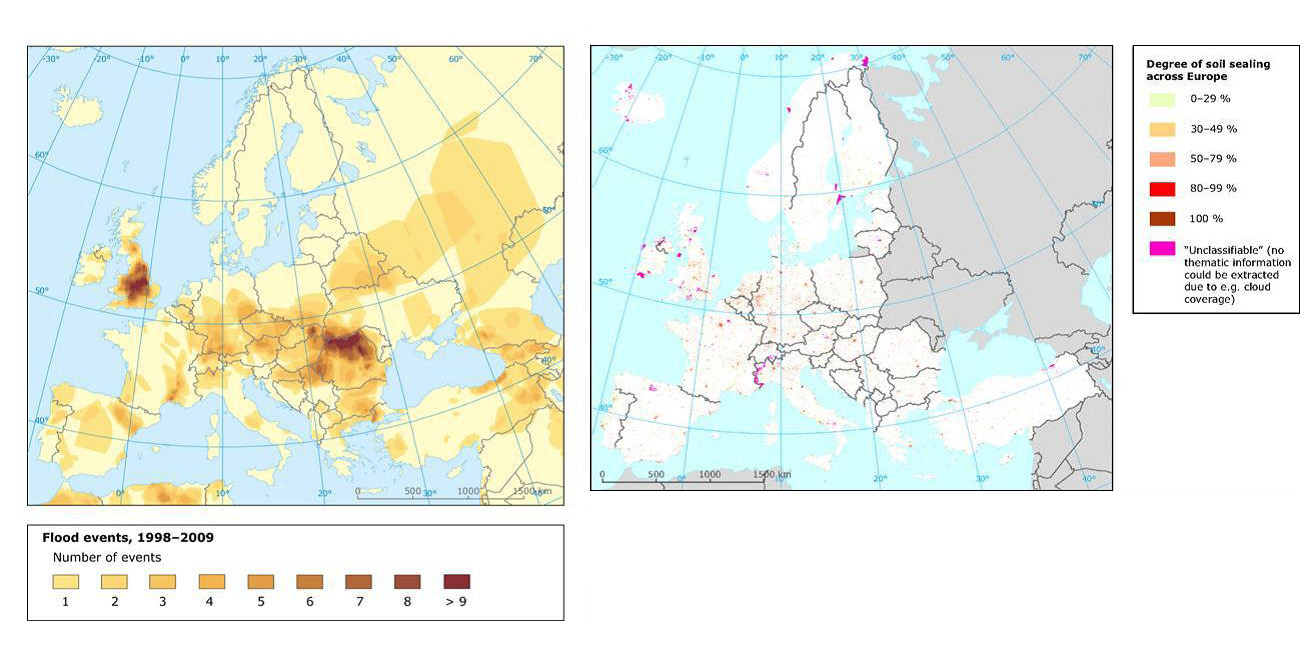EEA plays a key role in the technical coordination of the Land Monitoring Service and in coordinating in-situ observations. Use of the Copernicus services is an integrated part of the EEAs strategy to improve environmental information. Copernicus also plays an important role in the implementation of the principles of the Shared Environmental Information System (SEIS), and has the potential to make effective use of existing infrastructures in accordance with the INSPIRE directive. In the global context, Copernicus is an integral part of the Global Earth Observation System of Systems (GEOSS).
Copernicus evolution
In May 1998, institutions involved in the development of space activities in Europe gave birth to the Global Monitoring for Environment and Security (GMES) programme through a declaration known as the "Baveno Manifesto". The Manifesto called for a long-term commitment to the development of space-based environmental monitoring services, making use of, and further developing, European skills, and technologies. In October 2010, the programme entered a new phase with the adoption of the Regulation 911/2010 on GMES and its Initial Operations which provided for an initial operational governance framework and funds (EUR 107 million). This Regulation paved the way for the evolution of Copernicus to a fully operational programme from 2014.
Copernicus services provide data combined from in-situ sources, satellite sources (space) and modelling capacities. In-situ sources include all ground-based, air-borne, and ship/buoy-based measurements. To date, the services are provided by consortia (research or commercial) contracted to the European Commission (EC).
The Copernicus service portfolio includes Land Monitoring, Marine Monitoring, Atmosphere Monitoring, Emergency Management, Security and Climate Change.
The services have reached different degrees of maturity. Some are already operational (land monitoring and emergency management), while others are still in a pre-operational mode (atmosphere monitoring and marine monitoring) or in a development phase (climate change monitoring and services for security applications).
Copernicus will provide comprehensive geographic coverage of the state and trends of key environmental parameters in support of European policies and beyond. Businesses and citizens will also benefit through innovation and incentives to create new practical applications using environmental information.
EEA role
Through the coordination of the European environment information and observation network (Eionet), the EEA coordinates networks of data providers in countries in order to fulfil its mandate of providing European environmental information and assessments.
From 2010-2013, the EEA coordinates the GMES in-situ component through the
GISC (GMES In-Situ Coordination) project. GISC built up an Initial Framework (IF) that comprises tools and methods necessary for an efficient and sustainable interface between in-situ data providers and the Copernicus services based on existing information capacities (e.g. national systems and European networks).
Parallel to the in-situ coordination project, the EEA also contributed to the development of pan-European and local components of the Initial Operations of the Land Monitoring Service (GIO Land). GIO-Land established a structure and set of priorities for the land service, including land cover change information and very high resolution information on various biophysical variables for dynamic land monitoring.

As from the 1st of December 2014, the EEA assumed the role of technical coordinator of the Pan-European and Local components of the Copernicus land monitoring service. The Copernicus land monitoring service is operational, and provides geographical information on land cover, land use, vegetation state and the water cycle.
Applications built upon this information can provide support to spatial planning, forest management, water management, agriculture and food security and emergency management.
The three main components are:
- Global Land. Managed by the European Commission's Joint Research Centre, Global Land produces biophysical parameters on a worldwide scale that describe the state of vegetation, the energy budget and the water cycle.
- Pan-European continental land. Managed by the EEA, Pan-European Continental Land produces high resolution information sets on the main land cover types: artificial surfaces, forest areas, agricultural areas, wetlands and small water bodies.
- Local land. Managed by the EEA. Local Land focuses on "hotspots" which are prone to specific environmental challenges like drought and flooding.
Global dimension
Copernicus has strategic importance since it provides capacity to support the EU as a global actor. For example, Copernicus is designated as one of Europe’s main contributions to the implementation of the Global Earth Observation System of Systems (GEOSS). GEOSS is designed to provide decision-support tools to a wide variety of users. GEOSS will link existing and planned observing systems around the world and support the development of new systems where gaps currently exist. The Group on Earth Observations (GEO) is coordinating efforts to effectively build GEOSS.
In addition, Copernicus provides the EU with tools for participating in international efforts such as strengthening the global climate observation system. It will contribute to the EU Strategy for Africa through the development of an African observatory and the implementation of the African Monitoring of the Environment for Sustainable Development initiative. Copernicus has also been highlighted in the EU’s dialogues with USA, Russia, China and India.
More about Copernicus
More about the Copernicus land monitoring service
More about GMES In Situ Coordination
More about SEIS
More about INSPIRE

Document Actions
Share with others